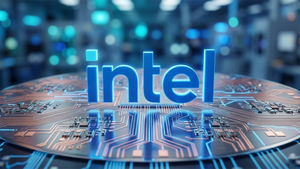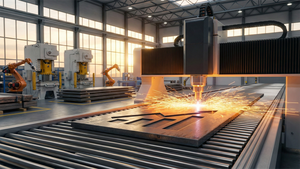
Professional tools and equipment manufacturer Snap-on (NYSE: SNA) announced better-than-expected revenue in Q2 CY2025, but sales were flat year on year at $1.28 billion. Its GAAP profit of $4.72 per share was 2% above analysts’ consensus estimates.
Is now the time to buy SNA? Find out in our full research report (it’s free).
Snap-on (SNA) Q2 CY2025 Highlights:
- Revenue: $1.28 billion vs analyst estimates of $1.25 billion (flat year on year, 2.1% beat)
- EPS (GAAP): $4.72 vs analyst estimates of $4.63 (2% beat)
- Adjusted EBITDA: $351.7 million vs analyst estimates of $355 million (27.5% margin, 0.9% miss)
- Operating Margin: 25.5%, down from 27.4% in the same quarter last year
- Organic Revenue rose 1.6% year on year (-7.7% in the same quarter last year)
- Market Capitalization: $17.66 billion
StockStory’s Take
Snap-on’s first quarter results were shaped by persistent headwinds in technician sentiment and macroeconomic uncertainty, which management described as more acute than in prior periods. CEO Nick Pinchuk attributed the topline decline to “unprecedented” pressures on U.S. consumer confidence, which impacted demand for higher-ticket items like tool storage. The company’s ongoing shift toward lower-priced and quicker payback products showed some traction, but was not enough to offset broader declines. Pinchuk acknowledged, “You can't say you made great hay when you're down six point eight percent organically,” emphasizing that the operational pivots were overrun by the magnitude of external challenges.
Looking ahead, Snap-on is leaning further into its strategy of tailoring offerings to technician needs, particularly at the lower end of its product spectrum. Management plans to focus new product development and marketing investments on items with faster technician payback, while monitoring the evolving impact of tariffs and consumer sentiment. Pinchuk noted, “We learned some things on how to make the pivot better, so we're going to continue to do that,” but cautioned that broader economic and political uncertainty remains a significant variable for the rest of the year.
Key Insights from Management’s Remarks
Management cited persistent weakness in technician confidence and external uncertainty as main factors behind the quarter’s decline, while highlighting areas of resilience and tactical shifts in product strategy.
- Technician sentiment decline: Snap-on saw a notable drop in technician confidence, which CEO Nick Pinchuk linked to “precipitous” declines in consumer sentiment and heightened macroeconomic uncertainty. This impacted demand, especially for big-ticket items like tool storage boxes, as many customers became more cautious with discretionary purchases.
- Product mix shift accelerates: The company continued its pivot toward lower-priced, quicker payback products, such as tool carts and entry-level diagnostic equipment. Pinchuk cited strong sales of the Solus diagnostic platform and emphasized that tailored offerings at the bottom end of categories helped mitigate some volume loss, even if broad declines persisted.
- Tools Group margin pressure: The mix shift toward lower-margin products and a decline in large tool storage sales weighed on Tools Group profitability. Pinchuk explained that while hand tools remained relatively stable, significant softness in storage led to lower originations and contributed to a drop in operating margin.
- Resilience in RS&I segment: The Repair Systems & Information (RS&I) segment, which includes software-driven repair solutions, outperformed other areas. Management highlighted software’s role in driving segment growth and profitability, supported by ongoing investments in artificial intelligence, such as natural language processing for technician repair data.
- International markets more stable: Compared to the U.S., Snap-on’s international operations were less affected by sentiment and policy uncertainty. Pinchuk noted that grassroots-level concerns over tariffs and political developments were largely confined to the U.S. market, with countries like Australia and the UK showing relative stability.
Drivers of Future Performance
Snap-on expects ongoing macroeconomic uncertainty, tariff developments, and shifts in technician behavior to shape performance for the remainder of the year.
- Continued product repositioning: Management plans to intensify focus on lower-priced, high-utility tools and diagnostic products, reallocating development and marketing resources away from premium, high-ticket items. This approach aims to better match technician purchasing power in an uncertain environment.
- Tariff and policy headwinds: The company anticipates further volatility due to tariff policy discussions and broader government actions, which may impact both input costs and customer sentiment. Pinchuk described the “fog” of tariffs as a persistent source of uncertainty, affecting both Snap-on and its U.S. customer base, though the company believes its U.S. manufacturing base offers some competitive advantage.
- Franchisee and cash flow management: Management highlighted the importance of supporting franchisees through working capital flexibility and targeted assistance for those most affected by current conditions. The company remains confident in its liquidity and is not planning to pull back on core investments, but acknowledges that franchisee confidence and stability are critical variables.
Catalysts in Upcoming Quarters
In the coming quarters, our analysts will monitor (1) whether Snap-on’s product mix pivot to lower-priced and high-utility tools sustains technician demand, (2) the impact of any new tariff or policy changes on both margins and customer sentiment, and (3) the stability of franchisee operations and working capital needs. Additional attention will be paid to the performance of international markets, which have shown relatively more resilience.
Snap-on currently trades at $338.01, up from $313.48 just before the earnings. Is the company at an inflection point that warrants a buy or sell? See for yourself in our full research report (it’s free).
Stocks That Trumped Tariffs
Donald Trump’s April 2024 "Liberation Day" tariffs sent markets into a tailspin, but stocks have since rebounded strongly, proving that knee-jerk reactions often create the best buying opportunities.
The smart money is already positioning for the next leg up. Don’t miss out on the recovery - check out our Top 6 Stocks for this week. This is a curated list of our High Quality stocks that have generated a market-beating return of 183% over the last five years (as of March 31st 2025).
Stocks that made our list in 2020 include now familiar names such as Nvidia (+1,545% between March 2020 and March 2025) as well as under-the-radar businesses like the once-small-cap company Exlservice (+354% five-year return). Find your next big winner with StockStory today.
StockStory is growing and hiring equity analyst and marketing roles. Are you a 0 to 1 builder passionate about the markets and AI? See the open roles here.






